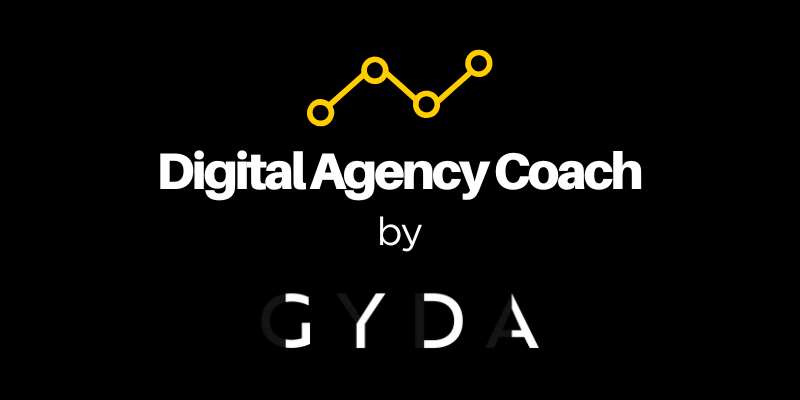Managing the time/cost/quality triangle within a digital agency
Imagine your entire business is dependent on your customers, yet they’re so demanding that nothing suits their fancy. Actually, don’t imagine it and don’t let it happen. When your customers run your business to the point of ruin, you have the wrong strategy.
The triangle of quality-versus-time-versus-cost presents many balancing difficulties. You can deliver two out of three of 'time/cost/quality', but not all three. We often add to this challenge by building a team-based upon two of the time/cost/quality variables, but then we chase leads which aren’t aligned to our operational sweet spot, resulting in only one thing: lost profit.
In short, we build a team to deliver ‘Yin’ projects, but also take on ‘Yang’ projects when we need to pay the bills (and it never ends well).
Consider these two examples:
Example 1: High-Quality Consultancy Services Inc:
Sarah runs a consultancy providing highly-skilled, expert, consultative services to low-volume, high-spend clients in the financial sector.
Her business strategy and operational team are designed to deliver a service that is:
High quality/bespoke/custom
Efficient (delivered quickly)
i.e. a client will receive their consultancy services (relatively) quickly and to high quality, but it won’t be cheap.
Her team is highly-skilled and expensive.
Example 2: Low-Cost Website R Us
John runs a website development company. They build simple websites using off-the-shelf templates, delivered quickly. They sell at high volume, low cost.
Their team is designed to deliver websites that are:
Inexpensive
Ready to use in a matter of days
i.e. their websites are cheap and quick but are not high quality*.
His operational team are provided by an outsourced, off-shore development agency. They are low-skilled and inexpensive.
* In this instance I mean 'generic/not bespoke/not complex' as opposed to 'poor quality' (not many businesses will stand the test of the time if they constantly deliver really bad work on a regular basis).
These two propositions whilst being polar opposites can be equally profitable.
So what’s the problem?
Problems arise when we, as agency owners, try to ‘feed the beast’. We say yes to projects that aren’t aligned with our value proposition and operational sweet spot. Consequently, our team is not able to deliver such projects effectively or profitably.
Let’s consider our two example companies with this (very common) scenario in mind.
High-Quality Consultancy Services Inc.
Sarah has just said yes to a low-value project to ‘pay the bills’. It’s a simple job but the client is going to be a time thief. Sarah has highly-paid, highly experienced consultants working on a small project, with limited opportunity for creating a profit. Importantly, in saying yes to this project, they’ve said no to another. They’ve lost valuable opportunity cost on a more profitable project.
Low-Cost Websites R US
John has just won a huge website development project. It’s a highly complex project that requires a large amount of consultancy, big technical integrations and an extensive Q.A. process to ensure the intricate business requirements are delivered in full.
Unfortunately, John's rather low-skilled outsourced developers have been tasked to deliver the project. His agency ultimately under-delivers, the client refuses to pay and starts legal proceedings. Potentially the agency’s reputation is left in tatters and financial ruin.
I’ve used two very extreme examples to make a point. Essentially, if we build a team to deliver on our value proposition, and we start to neglect our values and take on projects which our team is not highly optimised to deliver, we run huge, costly and possibly cataclysmic risks which could ultimately ruin our business.
So what can we do?
Step 1: Define your USP
Define the types of clients you are going to work with and how you are going to do it, e.g.:
Quick and cheap, but low quality (not bespoke)
Expensive and high quality, but not quick
High quality and quick, but expensive
etc.
Ultimately, you (not your clients) decide which two of the time/cost/quality balls you are going to juggle.
Step 2: Plan your operational process and build your team
If you’re delivering bespoke, high quality, costly consultancy services, plan to recruit high quality, costly consultants. Plan the roles that you’ll need to recruit as you grow, 3 years in advance, then stick to the plan.
If you’re delivering low cost, high volume, re-skinned websites, then select a technical platform (e.g. WordPress) that is suited to your model and choose an inexpensive, reputable development partner in Eastern Europe/India who can quickly and repeatedly deliver templated websites, at a predictable cost.
i.e. Plan and choose the team to suit your model and set the foundation for future growth.
Step 3: Stick to your guns
Believe in and be proud of your value proposition, build and motivate your team, invest in your operational processes and ‘market the hell out of it’.
Say yes
Don’t be ashamed that you deliver low cost, high volume work. Shout about how you’re the experts because you’ve already invested a huge amount of time and money building a team which is expertly positioned to deliver it.
The moral of the story, don’t take on projects that are the wrong fit for your team and don’t let your clients decide which of the time/cost/quality variables they’d like you to deliver on. It’ll only end badly.
